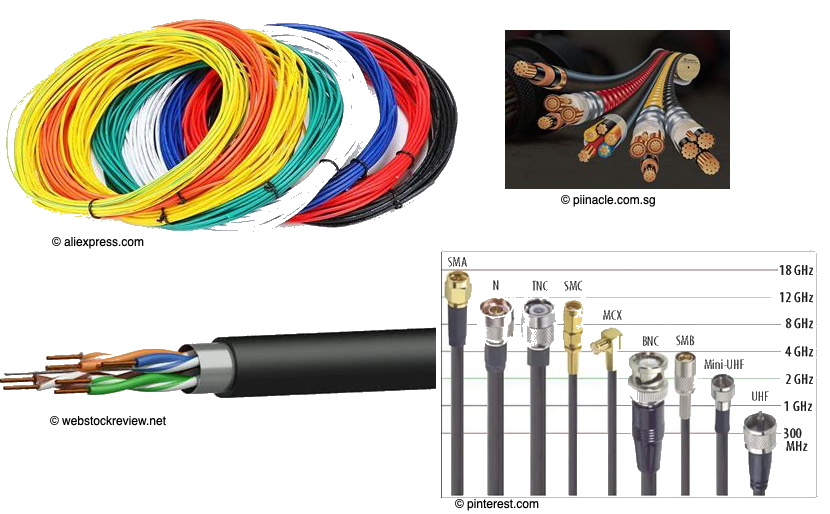Most wire used in electronics is made of copper due its low resistance. Some
aluminum is also used. Wire may be stranded from smaller gauges of wire to make
it flexible, or drawn into a solid single conductor which is stiffer than
stranded. Household electrical wiring is usually 12 or 14 AWG (American Wire
Gauge). Wire may be insulated with enamel, plastic, vinyl, or fabric or may be
bare, without insulation. Wire may be straight or coiled, commonly used to
connect microphones.
Most wire used to hook up circuits on boards or between boards, use 18 through
24 AWG insulated stranded or solid in a variety of colors. Several wires joined
together in a common insulating jacket it termed a cable. One form of cable
commonly used in amateur radio is coax. Coax varies in its diameter, larger
versions having greater power carrying capacity than the thinner ones. Coax is
designated by an abbreviation, RG, followed by an identifying number. RG-174,
about the smallest commonly encountered in amateur radio is about the same
diameter as 12AWG electrical wire. The next size up, RG-58 (or RG-59 used for TV
connections) is usually used to connect receivers to antennas. RG-8 an even
thicker cable capable of handling up to 1000W, is used for low resistance
connections from transmitters to antennas (and receivers as well).
There are larger versions of coax, often termed hardline because they have a
rigid outer conductor or shield. Hardline is very expensive and requires special
connectors and installation techniques, however it can handle the carriage of
enormous amounts of power – it is most often used in commercial broadcast
operations.
73… W3SEH

